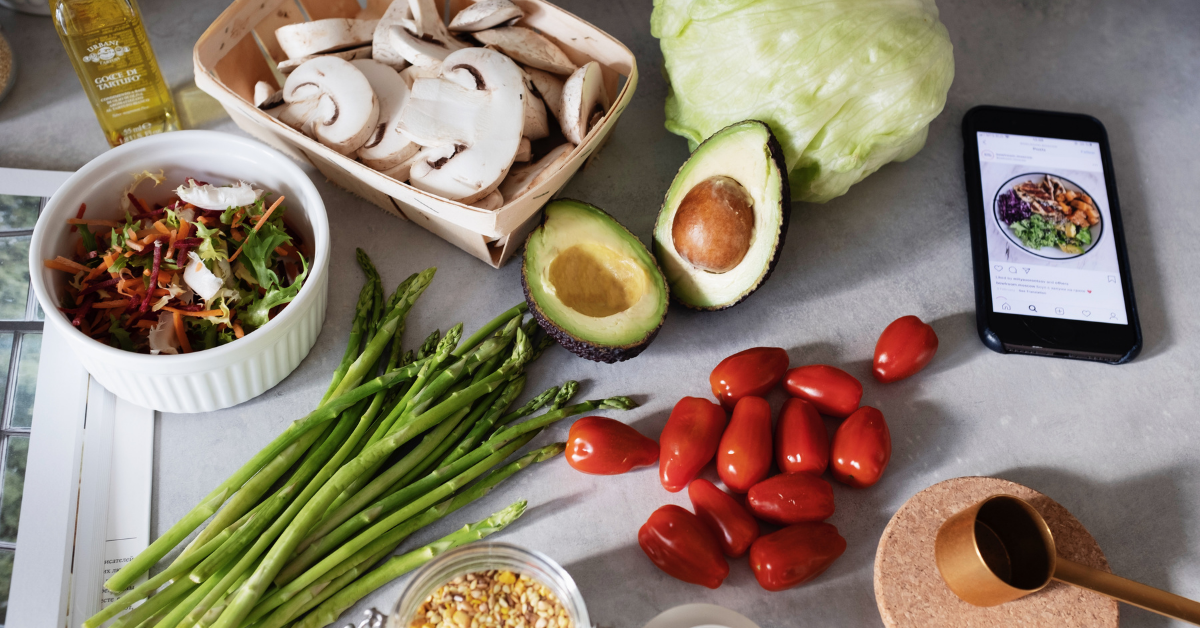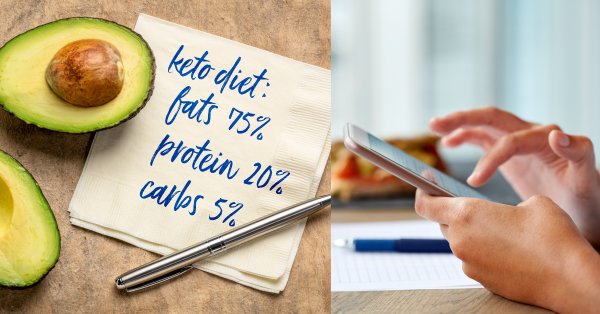
Five Dieting Rules and Guidelines
Becoming efficient and effective in your weight loss journey can only be determined by you. Every expert hired to give you advice, listen to your problems, motivate you, and be your support system will not be enough if this change does not start from within you.
Changing your perspective on the world, your life, and what you want for yourself will take some time. This change will also take some energy. Intentional energy that you invest into yourself and your health and wellness journey is never wasted.
What are you focused on improving the most?

You may begin with weight loss and nutrition, then progress to fitness; this will inevitably evolve into your emotional, spiritual, and mental health, becoming a focus over time. The decision to hire a personal trainer, and a nutrition coach, purchase a meal plan, are steps in the right direction. This personal trainer will teach about the importance of muscle growth and show you exercise, but the nutrition coach will give you the most valuable information.
Weight loss is an 80/20 ratio.
80% of your success is determined by what you eat and drink. The other 20% is your physical fitness and activity level.
Experts incorporate your life, lifestyle, body composition, and other things to make nutrition comprehensive.
The practicality of your plan is essential, and sustainability is equally as important.
Practical definition: concerned with the actual doing or use of something rather than with theory and ideas.
Sustainability definition: the ability to be maintained at a specific rate or level.
Changing the dietary makeup of your life will be a learning experience. The goal of hiring all of these experts or buying into a meal plan is to learn something. The experts are there to guide you, but it is ultimately your responsibility to make great choices that serve you well every day. Becoming accountable and self-aware of diet and activity level can become second nature.
Here are five Dieting Rules and Guidelines
1. Track Everything

The purpose of tracking and starting a food journal at the beginning of a diet is to force people to see what they are doing on paper. It’s also an excellent way for that individual to share with their coach and find opportunities for change.
Using a simple app on your phone can be very helpful in these unchartered waters. My Fitness Pal is one of the most commonly used fitness and food tracking apps.
When you first start tracking, precision is essential. Weighing your food may become a habit as you embark on your food tracking quest.
The most significant part of Myfitnesspal is that it will remember foods that you ate in previous days or meals. If you are a habit creature and consistently choose the same snacks throughout your week, this app remembers what you ate once you have established a serving in your food log.
2. Figure Out Your Macros

To achieve optimal results for fat loss, you will want to know your macro goals to stay in line with your daily caloric intake.
First of all, what are Macros?
- Fats
- Protein
- Carbohydrates
Macro is an abbreviation of macronutrient referring to the three main nutrient groups humans need. Tinkering with your macros will help you lose body fat, maintain your weight, or help with gaining weight safely, depending on if you are eating above or below what you are burning daily.
Few foods contain solely one macronutrient. Many are made up of two or sometimes three macronutrients in varying ratios. You’ll get to grips with this more as you start tracking your macros, but it’s good to be aware of it before you go HAM on the cheese.
Choosing the right nutrition plan that will work for you is essential. Most plans cut calories (an approach that works for many); it’s not just about how much you’re eating every day, but WHAT you’re eating. An extreme example of calories in calories out diet would mean 20 calories of kale equals 20 calories of chocolate. The slippery slope of calorie-focused diets is that you could consume solely “junk” or nutrient-devoid foods and still stay within or under your calorie goal.
It’s essential to know your macro goals and hit them every day through food tracking. This creates a mindset to prioritize healthier and nutrient-dense foods to support your body and training needs.
Next time you crave that white chocolate Klondike bar (why wouldn’t you!?), you can have it, add it into your macros, and work the rest of your meals around it. I found a super easy macro calculator for you to use! Go for it: macro calculator
3. One Flexible Meal Per Week

You may wonder what a relaxed meal means. Generally speaking, you may want to practice six days on and one day off your diet when you are dieting. This advice is not to be taken to extremes!
On that one day off, you may have a dinner planned with the family members for a big birthday celebration. That dinner might be at a handmade and homemade Italian restaurant where they make all of their kinds of pasta from scratch. You will not want to miss out on just enjoying this meal!
You can plan your week and eat a touch lower throughout your week, making indulgences much more enjoyable.
Always stay in line with your tracking, be honest with yourself, and understand that every day is a new day to do great things. Being precise in your pursuit will help you learn to balance as well. Maybe that one night is your date night, or perhaps you want to go out for ice cream with the family; it’s something to look forward to.
4. 10k Steps A Day

This goal is pretty common in the health and wellness industry.
In recent decades, the drive to get people more active, especially in their sedentary jobs, has been based around steps per day.
Some big companies and corporations have created health programs for their employees as a part of their benefits package. A pedometer is the most straightforward way of tracking your steps, but rapid technological advances have allowed us to count our steps with our watches, phones, and activity rings (Aura).
There’s no excuse to miss your goals. 10k steps a day should be easy and obtainable if focused on your fitness journey.
5. Be Practical

This is not a punishment; it’s a choice. Lean into this choice to change your mind and body. Finding your why and changing your focus from obstacles to opportunities will be life-changing.
Making this practical for your life and your schedule will help you feel less stressed about sticking to a new habit or routine. It has to fit you.
The definition of the word practical is: of, related to, or manifested in practice or action.
This means that if the diet doesn’t fit in with your crazy busy life, you probably won’t succeed. No one said this was going to be easy.
The professionals around you will make things look easy; the person at the gym moving from weights to machines so confidently will make it look easy. The truth behind this whole thing is that any change takes a considerable amount of international effort.
You need to be dedicated to yourself and your goals. Being practical with yourself about plans, time management, and forward progression will occur naturally.
Let’s use this example of a working mother with two children that have after-school activities. She works at a computer all day and eats whenever she feels hungry, never really considering what she’s eating but just getting the food in.
Here is her plan. Remember, you want this to be sustainable, and you want to keep the weight off for the rest of your life.
- Set a realistic and practical goal to get active. Choose to work from a standing desk or buy an under-the-desk bike so that you can pedal your legs when you do need to sit.
- Wake up earlier every day and try to get a half-hour of exercise in. you can stream youtube HIIT videos that can be done with bodyweight. If you have exercise equipment at home, use resistance training to give you more strength and change your body composition faster.
- Go to the gym if you have a gym membership; it’s high time you start using it. Gyms are safe; the equipment sanitization standard is higher than ever after the Covid 19 pandemic.
- Talk to a trainer about your physical fitness and see where you are at so that you can set a long-term goal of weight loss over the next year.
- Accept that this will take time and dedication, grit and grace, highs and lows and it’s all going to be worth it.
- Focus on what you are putting into your mouth. Be intentional about the foods you choose to eat and make better choices consistently.
If you do not like where you are today, I promise that you will look at yourself in the mirror one day in the future and love what you see. One foot in front of the other.
Mental health has been a priority for everyone, especially in the last two years.
Your mental health is directly related to your physical health.
Weight loss might be easy for you, and once you meet your goal weight, it’s essential to reassess your mental health. Some people have extensive experience with losing weight and gaining it back and then losing weight and gaining it back again! This is due to other underlying issues that might be standing in your way. Or, it could also be caused by a simple lack of nutrition knowledge. Many of us over-commit and underdeliver, cutting corners just to drop a little bit of weight.
Take the time to learn to sustain the exciting changes that are about to happen to your body. Looking into macros for weight loss is essential if your goal is to lose body fat. Do your plans include building muscle and learning how to lose body fat? Macro counting or nutritional number crunching is here to help you quantify the amount of each macronutrient you are eating. This is how you are going to achieve your goals safely and sustainably.
Macro counting is the realm of gym lovers and bodybuilders but has recently become more mainstream. Macro counting is the count or goal of the three main nutrient groups, protein, fat, and carbohydrates.
Protein is crucial if you want to maintain or build muscle. Following a targeted ketogenic diet would be ideal for someone already very active. Adequate protein helps to increase lean body mass by building muscle- the most sustainable path to long-term weight loss.
Here is the thing about protein:
Keto follows a moderate protein intake but still a protein intake. Adjust your numbers according to your goals, and you will have no problem seeing changes fast.
Here is the thing about fats:
Protect your relationship with food in all of your calorie counting and macro counting. Visit a doctor or registered dietician to ensure you stay healthy. Feeling anxious about a meal on a Saturday or a glass of wine on a Friday probably means you should take a step back.
Do not take the fun and joy out of food. Read more...




One day, I was walking up a flight of stairs, and it was hard to breathe, and I had no energy after 1 flight. I was sweating badly. Then I remembered when my cousins told me about Keto, and I realized if I didn’t do something with my weight, I would be dead before I hit 40. Also, I realized that I had a lot to live for, and I needed to change my health because I had two little nieces and a loving family I wanted to be around for many years to come. And I Think this is the best way to maintain lifestyle.
Mark
December 4, 2021 at 3:12 pm